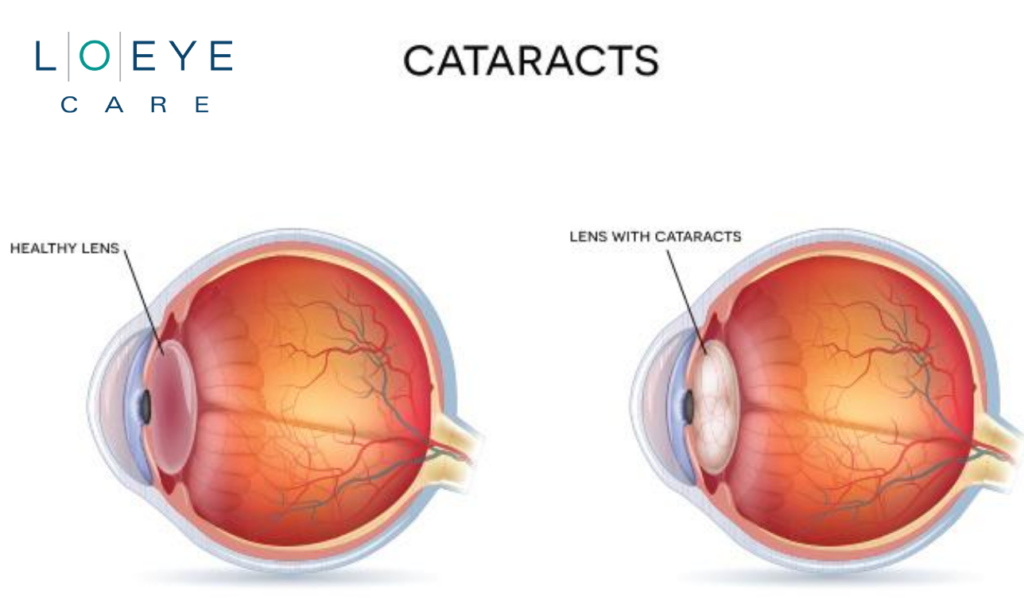
What are cataracts and what causes them?
A cataract is a medical condition in which the lens of the eye becomes progressively opaque, resulting in impaired vision. Cataracts can cause a yellowish-brown tint to be applied to your field of vision, which can impact color identification, make it more difficult to read, and perform other routine activities. Most cataracts develop slowly and don’t disturb your eyesight early on, however, with time, cataracts will eventually interfere with your vision. Cataracts can also be caused by other eye conditions, past eye surgery, or medical conditions such as diabetes. Long-term use of steroid medications can also cause cataracts to develop.
How a cataract forms: The lens, where cataracts form, is positioned behind the iris. The lens focuses light that passes into your eye, producing clear, sharp images on the retina — the light-sensitive membrane in the eye that functions like the film in a camera. As you age, the lenses in your eyes become less flexible, less transparent, and thicker. Age-related and other medical conditions cause tissues within the lens to break down and clump together, clouding small areas within the lens.
As the cataract continues to develop, the clouding becomes denser and involves a bigger part of the lens. A cataract scatters and blocks the light as it passes through the lens, preventing a sharply defined image from reaching your retina. As a result, your vision becomes blurred.
Cataracts generally develop in both eyes, but not evenly. The cataract in one eye may be more advanced than the other, causing a difference in vision between eyes.